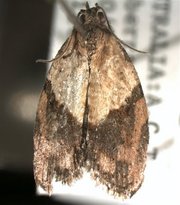Related article:
– Should Government Aircraft Spray Chemicals on Residential Areas?

Officials on Thursday abruptly canceled a state program to spray chemicals to combat crop-eating moth in urban areas after months of public uproar over its unclear effects on the environment and human health.
A.G. Kawamura, state secretary of food and agriculture, announced that California had abandoned plans to send up pesticide-spraying planes to fight the light brown apple moth in cities. That includes the densely populated San Francisco Bay area, which had been scheduled for treatment this fall.
“I know there’s concern out there, and we want to be able to address that,” Kawamura told reporters. “Our focus is to use the technology that has moved progressively forward.”
Instead, state and federal agricultural officials say they’ll keep the invasive pest from reproducing by releasing sterile moths that will render eggs useless.
Kawamura said that sterile moths have been a part of the state’s plans for more than a year, and that new science — not environmental concerns — prompted the change in direction.
The pesticide may still be sprayed on farmlands and remote areas. Agricultural authorities said they would not spray over communities near farms.
Still, politicians from Monterey to Sonoma, as well as a broad coalition of anti-spray activists, swiftly claimed the decision as their own, hard-won triumph.
“Ever since this thing came out I always thought it was a public disaster,” said Congressman Sam Farr, a Democrat. “The spraying started and people just went nuts. It became the lightening rod for protests, and that put the whole program at risk.”
At least 487 people reported feeling symptoms ranging from itchy eyes to breathing trouble after planes dusted a fine chemical mist over the area surrounding Monterey and Santa Cruz last fall.
Two counties and a Carmel-based environmental group sued the state, saying Kawamura broke state law by authorizing the aerial campaign without the benefit of environmental review.
Judges in Santa Cruz and Monterey counties this year halted the program until the state studied the spray’s effect on people and the environment.
In April, state environmental health experts said the illnesses reported after the first round of spraying couldn’t conclusively be linked to efforts to eradicate the dime-size Australian pest.
On Thursday, groups representing hundreds of residents of Northern California said the decision was proof their protests had worked.
“Wahoo! This is a landmark victory for the public,” said David Dilworth, executive director of Helping Our Peninsula’s Environment. “People had to spend thousands and thousands of hours of high-level work to get a bureaucracy to do the obviously moral choice.”
The insect, which federal officials say threatens more than 2,000 varieties of California plants and crops, was first spotted in the state in March 2007 and has infested 10 counties stretching from north of San Francisco to Santa Barbara.
(Corrects when the insect was first spotted in the state to March 2007, instead of March 2008; ADDS that spraying may continue over farms.)
By GARANCE BURKE, Associated Press Writer
Thu Jun 19, 11:49 PM ET
Source: AP